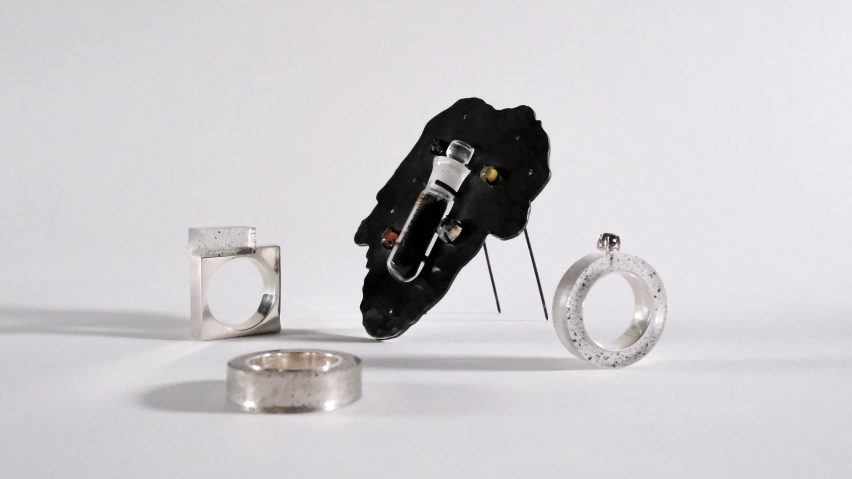
The Tyre Collective turns microplastic tyre-wear particles into objects
British startup The Tyre Collective has begun to make products from the microplastic particles that come off car tyres as they drive on roads, producing results including jewellery, a lamp and a battery.
The group – which was awarded the UK national James Dyson Award in 2020 for its car-mounted tyre-wear capturing device – worked with a range of collaborators to create the objects, which were displayed at the Material Matters fair at this year's London Design Festival.
According to The Tyre Collective, over a million tonnes of synthetic rubber particulate is produced annually by tyres on Europe's roads, and this tyre wear is a major source of microplastic pollution on both land and sea.
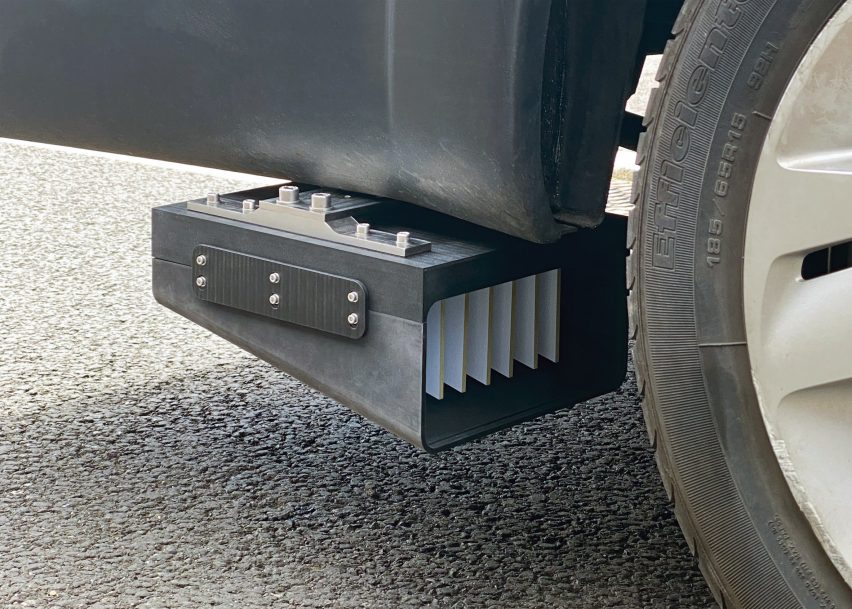
"The air we breathe in London contains more tyre wear than exhaust pollution," said the Tyre Collective. "This problem is worsened with electric vehicles from the added battery weight and torque."
The group worked with designers Rafael El Baz and Qiang Li, studio Lowpoly and scientists from the Queen Mary University of London Materials for Sustainability Group to experiment with potential uses for the material.
Lowpoly, a Madrid-based company specialising in sustainable 3D-printing, created a series of objects by mixing the rubber with recycled PLA (polylactic acid), a type of plastic often used for filament in 3D printers.
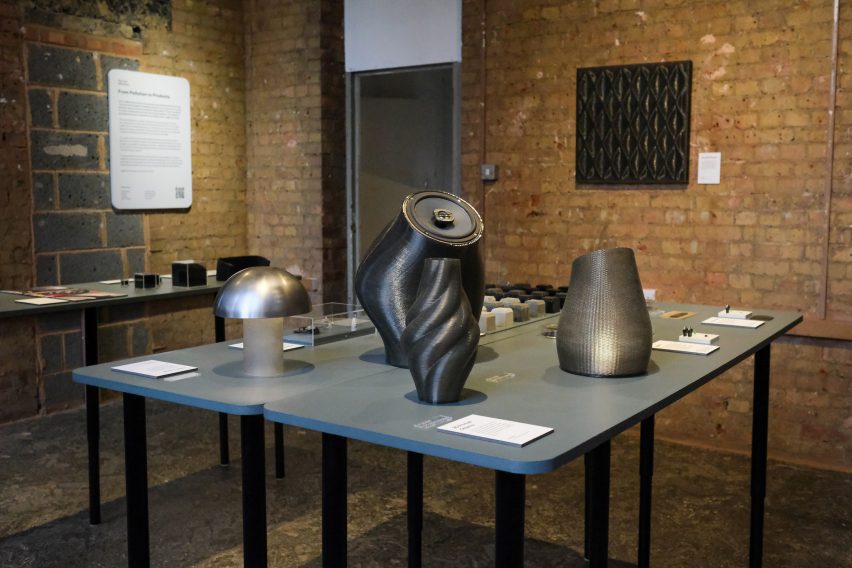
Their pellet mix contained 20 per cent tyre particles to 80 per cent recycled PLA. From it, they fabricated objects including a vase, speaker, lamp and acoustic panel, all with a lustruous, faintly translucent dark grey finish. The material can be further recycled.
Li, who operates the jewellery brand MuseLi-Q, mixed the tyre-wear rubber with resin and recycled sterling silver to make a series of rings, with the particles suspended in the clear resin in a manner that the designer said reminds her of inclusions within gemstones.
She also made a sculptural brooch that is meant to represent a single tyre particle, with a vial of the material surrounded by stones that reflect the elements within it.
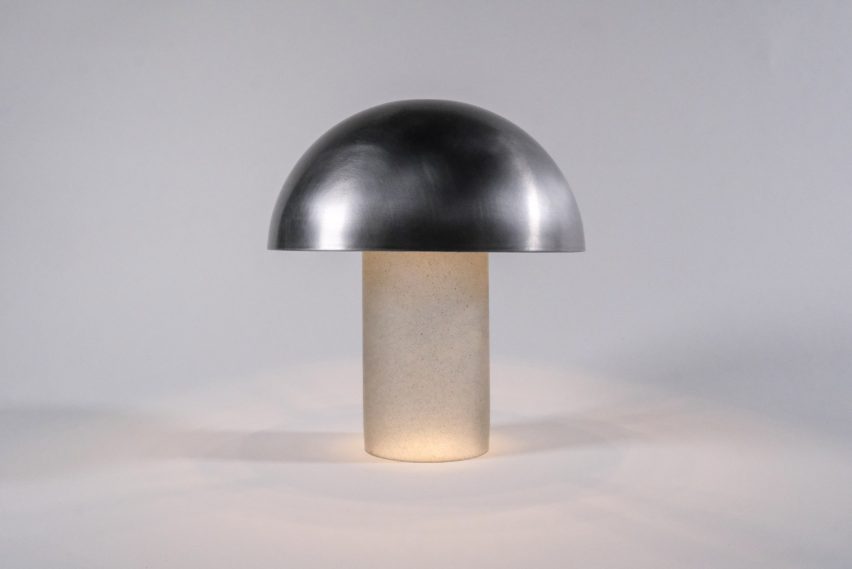
With London-based El Baz, who works primarily with waste, The Tyre Collective explored many different material compositions that could be made by mixing the rubber with materials such as resin and jesmonite.
El Baz used one of his favourite variations – a semi-translucent, rubber-flecked resin – to make the base for a mushroom table lamp.
Neither the rings nor the lamp are recyclable due to the mixing of rubber with resin.
Wanting to go beyond decorative design and look at functional applications, The Tyre Collective's final collaborator was the Queen Mary research group, led by green-energy lecturer Maria Crespo.
The researchers made a coin battery – a small, single-cell battery of the kind that might be used in a wristwatch – using the rubber. The rubber was carbonised and made into a slurry that was coated on a copper foil to make the battery, in combination with other components.
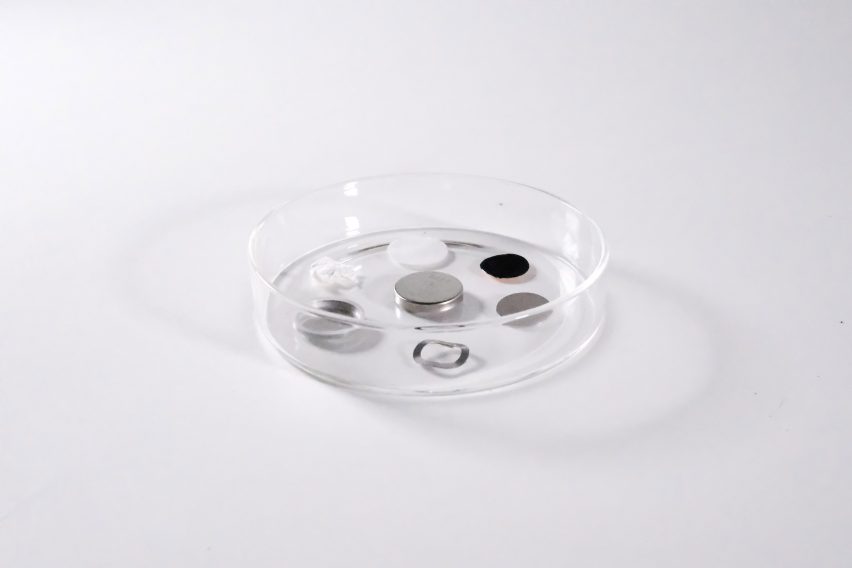
The collaborations were funded by the Terra Carta Design Lab, a competition launched last year by King Charles III and former Apple designer Jony Ive to support solutions for the climate crisis.
The Tyre Collective is concurrently still developing its tyre-wear capture device, which is designed to be mounted near the wheels of vehicles and uses static electricity to suck in the rubber particles emitted during driving.